The AMD Ryzen 7 5700G, Ryzen 5 5600G, and Ryzen 3 5300G Review
by Dr. Ian Cutress on August 4, 2021 1:45 PM ESTCPU Tests: Legacy and Web
In order to gather data to compare with older benchmarks, we are still keeping a number of tests under our ‘legacy’ section. This includes all the former major versions of CineBench (R15, R11.5, R10) as well as x264 HD 3.0 and the first very naïve version of 3DPM v2.1. We won’t be transferring the data over from the old testing into Bench, otherwise it would be populated with 200 CPUs with only one data point, so it will fill up as we test more CPUs like the others.
The other section here is our web tests.
Web Tests: Kraken, Octane, and Speedometer
Benchmarking using web tools is always a bit difficult. Browsers change almost daily, and the way the web is used changes even quicker. While there is some scope for advanced computational based benchmarks, most users care about responsiveness, which requires a strong back-end to work quickly to provide on the front-end. The benchmarks we chose for our web tests are essentially industry standards – at least once upon a time.
It should be noted that for each test, the browser is closed and re-opened a new with a fresh cache. We use a fixed Chromium version for our tests with the update capabilities removed to ensure consistency.
Mozilla Kraken 1.1
Kraken is a 2010 benchmark from Mozilla and does a series of JavaScript tests. These tests are a little more involved than previous tests, looking at artificial intelligence, audio manipulation, image manipulation, json parsing, and cryptographic functions. The benchmark starts with an initial download of data for the audio and imaging, and then runs through 10 times giving a timed result.
We loop through the 10-run test four times (so that’s a total of 40 runs), and average the four end-results. The result is given as time to complete the test, and we’re reaching a slow asymptotic limit with regards the highest IPC processors.

Sizeable single thread improvements.
Google Octane 2.0
Our second test is also JavaScript based, but uses a lot more variation of newer JS techniques, such as object-oriented programming, kernel simulation, object creation/destruction, garbage collection, array manipulations, compiler latency and code execution.
Octane was developed after the discontinuation of other tests, with the goal of being more web-like than previous tests. It has been a popular benchmark, making it an obvious target for optimizations in the JavaScript engines. Ultimately it was retired in early 2017 due to this, although it is still widely used as a tool to determine general CPU performance in a number of web tasks.
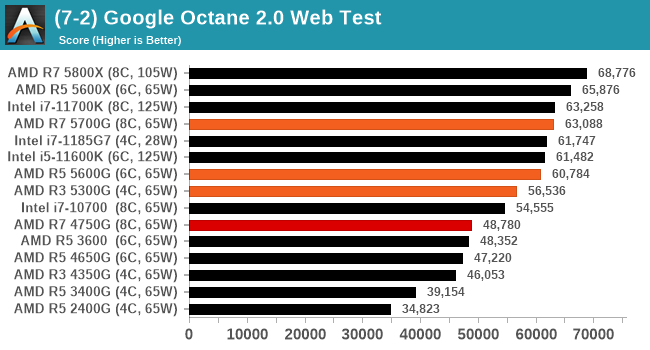
Speedometer 2: JavaScript Frameworks
Our newest web test is Speedometer 2, which is a test over a series of JavaScript frameworks to do three simple things: built a list, enable each item in the list, and remove the list. All the frameworks implement the same visual cues, but obviously apply them from different coding angles.
Our test goes through the list of frameworks, and produces a final score indicative of ‘rpm’, one of the benchmarks internal metrics.
We repeat over the benchmark for a dozen loops, taking the average of the last five.
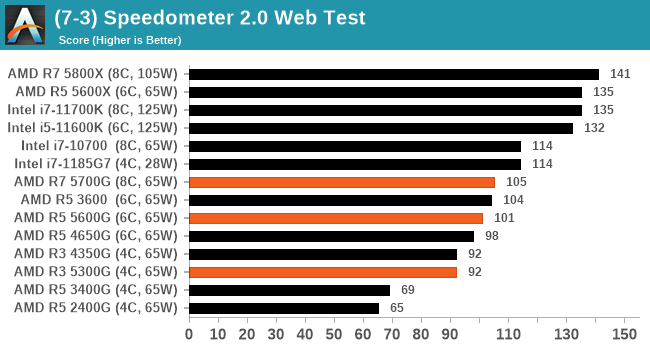
Legacy Tests
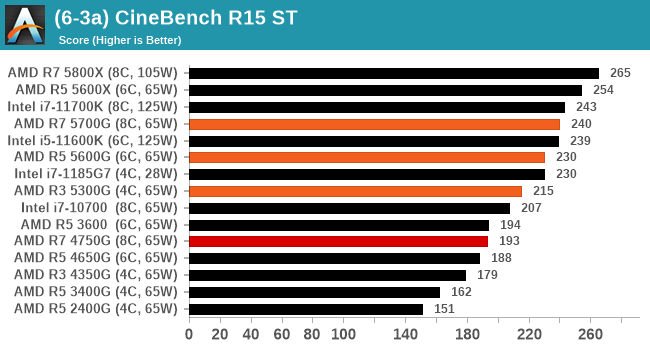
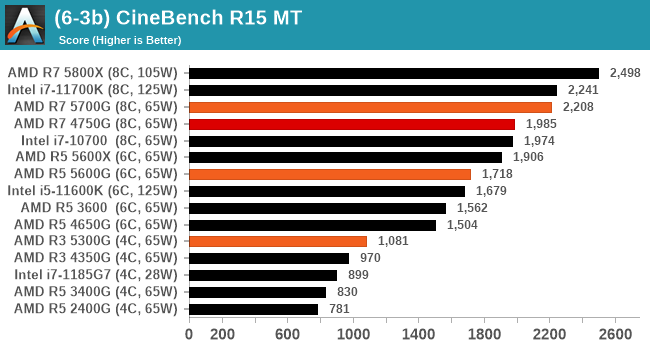
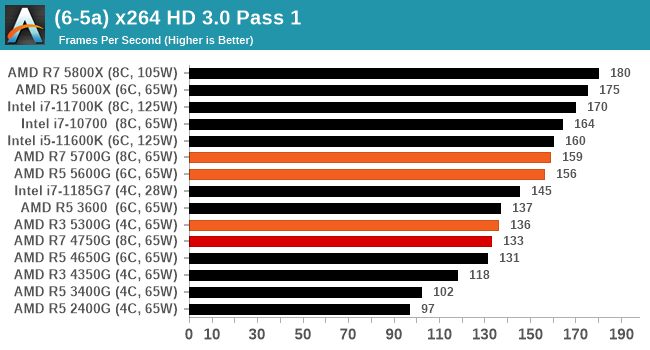
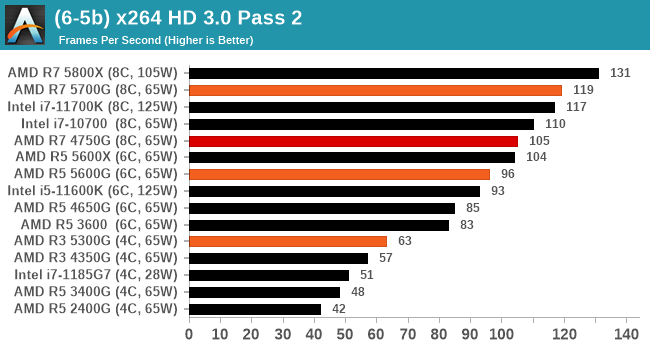

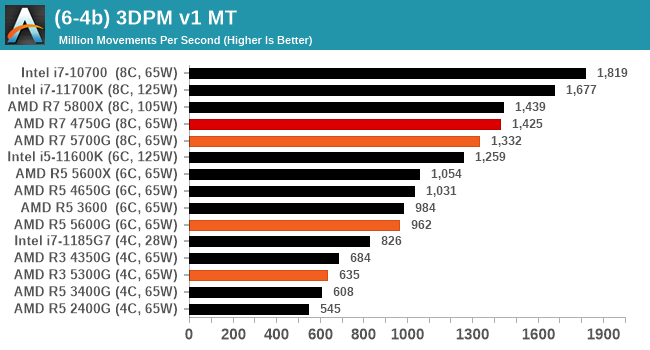


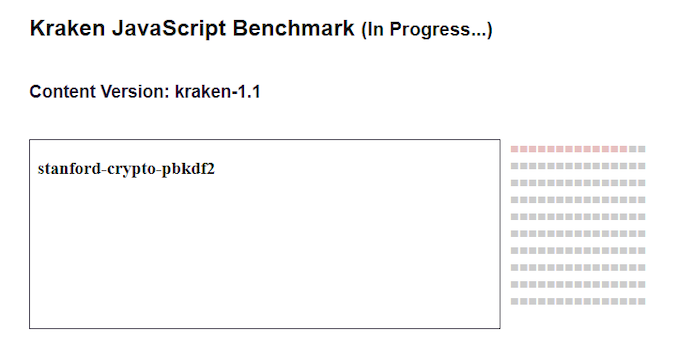
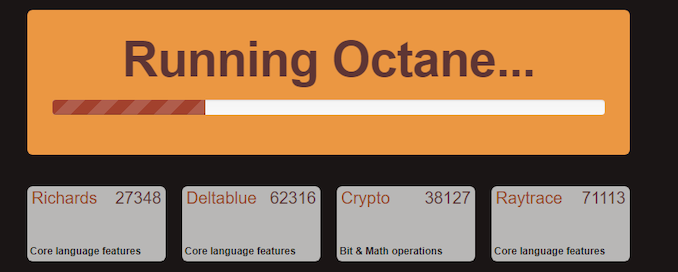
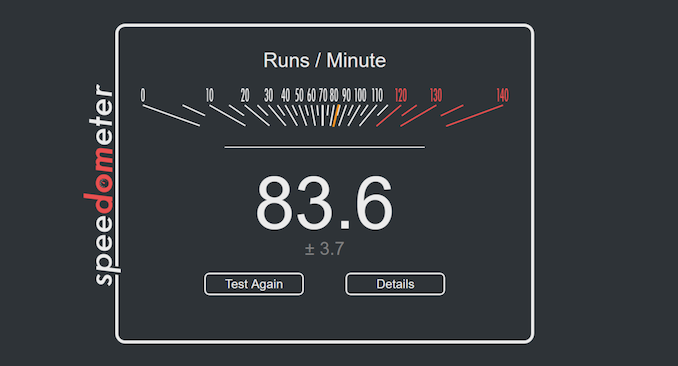








135 Comments
View All Comments
mode_13h - Monday, August 9, 2021 - link
> RAMBUS was supposed to unlock the true power of the Pentium 4I think Intel underestimated what the DDR consortium was capable of doing. Perhaps they were right, as the DDR makers were eventually forced to license some RAMBUS patents, as I recall.
> the Willamette I used for a decade had plain SDRAM, not even DDR.
Northwood was the best. Sadly, I bought a Prescott because I wanted hyperthreading and hoped the 2x L2 cache would compensate for the longer pipeline. But, it turns out you could even get hyperthreading and 800 MHz FSB, in a couple Northwoods. I also thought SSE3 might be useful, but never got around to doing anything with it.
BTW, I also used DDR400 in my P4.
GeoffreyA - Tuesday, August 10, 2021 - link
For me, both the Prescott and A64 were available, but I went with the latter because I always wanted an Athlon. Originally, was looking at the XP 3200+ and dreamt of coupling that with an nForce2 motherboard. As for Northwood, masterpiece of a CPU. P4 would have put up a respectable defence against the A64 had they continued with it. My aunt had a 2.4 GHz Northwood back then, and my school friend a 2.66 GHz one. His struggled at first, but once he got more RAM and a GeForce FX 5700, it really flew. Still remember running through Delta Labs in Doom 3 at 60 fps!mode_13h - Wednesday, August 11, 2021 - link
Prescott was rumored to have 64-bit support, though it wasn't enabled. I think that explains some of the additional pipeline depth.When Core 2 first launched, I was skeptical the IPC could increase so much that so much lower-clocked CPUs would really outperform their predecessors. It took me a little while to fully accept it. I was hopeful the final 65 nm iteration of Pentium 4 would finally let the Netburst architecture stretch its legs, but even that couldn't overcome its inefficiencies and other deficits.
GeoffreyA - Friday, August 13, 2021 - link
Quite likely. Come to think of it, didn't the Pentium Ds have x64? And they were Prescotts.Indeed, 65 nm might have taken Northwood further. Would've made an interesting processor which we'll never see. As for their 31-stage brethren, the 65 nm Cedar Mills dropped power a fair bit.
GeoffreyA - Friday, August 13, 2021 - link
"65 nm might have taken Northwood further"Well, we didn't even get to see a 90 nm one.
coolrock2008 - Wednesday, August 4, 2021 - link
Ryzen 5 APUs Table, there is a typo. the 5600G is listed as an 8 core part whereas its listed as a 6 core part in the previous table.Wereweeb - Wednesday, August 4, 2021 - link
I know how hard it is to actually publish something that is both excellently researched and at a moment the matter is still relevant. Thank you for your coverage.Plus, it's Anantech, the important parts here are the data and analysis, not how well a tired writer proofreads their own text.
Fulljack - Friday, August 6, 2021 - link
I disagree. any researcher would say that proofreading are also as important as the analysis itself. it's how you serve the data and the analysis to broader audience, after all.dsplover - Wednesday, August 4, 2021 - link
Three times the IPC of my beloved i7 4790k’s. I’ll try one, maybe a few as I don’t need the fastest.The cooler, fast enough is fine for my 1U builds.
Thanks AMD. Tiger Lake never appeared, you win.
dsplover - Wednesday, August 4, 2021 - link
I meant 30% more IPC…